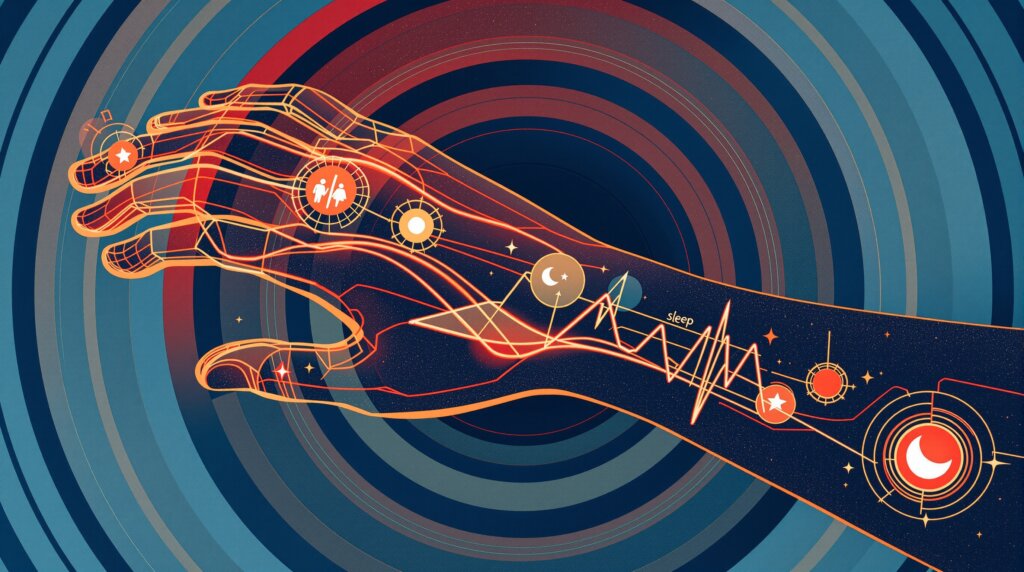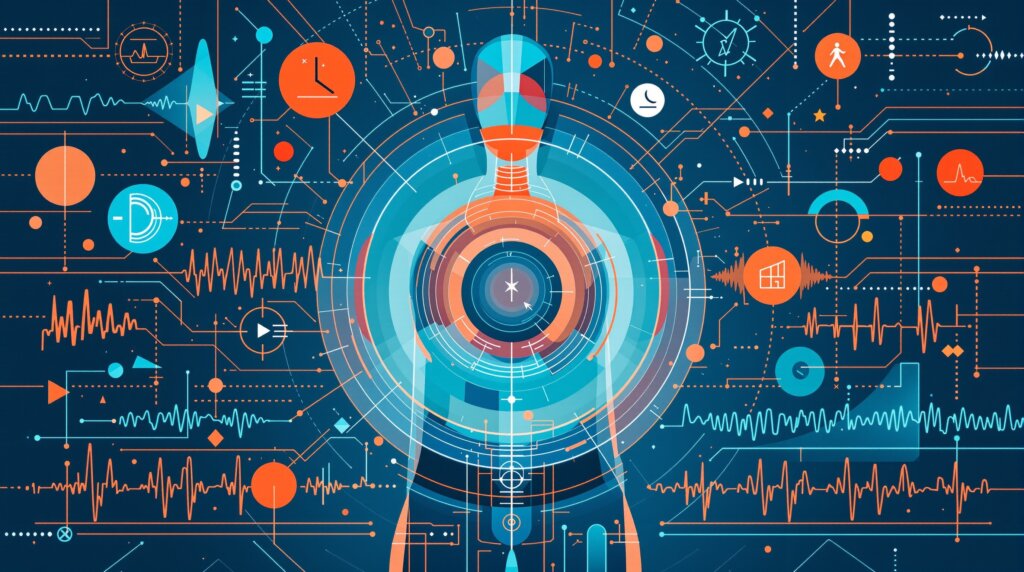The Future of Aging: Tech Tools That Extend Healthspan
Understanding Healthspan in the Age of Longevity
When we talk about living longer, most people focus on lifespan the total number of years we’re alive. But there’s a more meaningful metric that’s reshaping how we think about aging: healthspan. This refers to the period of life spent in good health, free from serious disease and disability. While we might add years to our lives through medical advances, the real question is whether those years will be vibrant and fulfilling.
The distinction matters more than ever as global populations age rapidly. By 2050, the number of people over 60 is expected to double, creating unprecedented challenges for healthcare systems worldwide. This demographic shift is driving intense interest in technologies that don’t just help us live longer, but help us live better for longer. From advanced wearable sensors to groundbreaking genetic therapies, we’re witnessing a technological revolution that may fundamentally change how we age.

Building the Foundation: Why Basics Still Matter
Technology as Enhancement, Not Replacement
Before diving into cutting-edge interventions, it’s crucial to understand that technology works best when it amplifies solid health fundamentals. The pillars of healthy aging remain remarkably consistent: quality nutrition, regular physical activity, restorative sleep, and meaningful social connections. These lifestyle factors often have more impact on healthspan than any single technological intervention.
Dr. Neil Paulvin and other longevity experts consistently emphasize that advanced technologies should complement, not replace, these basic practices. A continuous glucose monitor might provide valuable insights, but it can’t overcome the effects of a consistently poor diet. Similarly, the most sophisticated sleep tracking won’t compensate for chronic sleep deprivation caused by poor sleep hygiene.
This foundational approach is where personalized health monitoring becomes particularly valuable. Modern wearables can help identify which fundamental areas need attention, providing the data-driven insights needed to make targeted improvements. The key is using technology to optimize the basics before pursuing more complex interventions.
Breakthrough Technologies Targeting Aging Mechanisms
Cellular and Genetic Approaches to Longevity
The most promising anti-aging technologies work at the cellular level, targeting the fundamental mechanisms that drive the aging process. Senolytics represent one of the most exciting developments in this field. These drugs specifically target senescent cells, older cells that have stopped dividing but continue to release inflammatory compounds that damage surrounding healthy tissue. Early clinical trials suggest that clearing these “zombie cells” may help reduce age-related inflammation and improve tissue function, though the long-term effects are still being studied.
Gene therapy approaches are taking a different angle, attempting to modify the genetic switches that control aging processes. Some researchers are exploring ways to activate genes associated with longevity, while others focus on silencing genes that accelerate aging. While still largely experimental, these techniques have shown promising results in laboratory studies and early-stage clinical trials.
Stem cell therapy offers another regenerative approach, potentially allowing us to replace damaged tissues with fresh, healthy cells. The field has made significant strides in recent years, though it’s worth noting that many commercial stem cell treatments remain unproven and poorly regulated. The most legitimate applications tend to focus on specific tissues like cartilage and certain blood disorders.
Metabolic and Cellular Enhancement Strategies
Telomere extension therapy represents perhaps the most direct approach to cellular aging. Telomeres the protective caps on chromosomes naturally shorten with age, and their length correlates with cellular aging. Some experimental treatments aim to extend telomeres or boost the activity of telomerase, the enzyme that maintains them. However, this approach requires careful consideration since uncontrolled telomerase activity is also associated with cancer development.
Caloric restriction mimetics and NAD+ boosters take a biochemical approach, attempting to activate the same cellular pathways triggered by caloric restriction a well-established method for extending lifespan in laboratory animals. These compounds may help improve cellular energy production and stress resistance, though their effects in humans are still being evaluated through ongoing clinical trials.
Measuring Aging: The Rise of Biological Clocks
Beyond Chronological Age
One of the most significant advances in aging research has been the development of biological age measurements, often called “aging clocks.” These sophisticated algorithms analyze various biomarkers to determine how fast someone is aging at the cellular level, which may differ significantly from their chronological age.
Different types of aging clocks focus on various aspects of cellular function. Epigenetic clocks analyze DNA methylation patterns, chemical modifications that change how genes are expressed without altering the underlying DNA sequence. Proteome clocks examine the levels of specific proteins in blood samples, while transcriptome clocks look at gene expression patterns. Each approach provides unique insights into different aspects of the aging process.
Perhaps most intriguingly, researchers are developing organ-specific aging clocks that can identify which parts of the body are aging faster than others. This granular approach enables much more targeted interventions someone might discover their cardiovascular system is aging rapidly while their brain remains relatively youthful, allowing them to focus their healthspan efforts accordingly.
The real power of these biomarkers lies in their ability to track the effectiveness of interventions over time. Rather than waiting decades to see if a particular lifestyle change or treatment extends lifespan, aging clocks can potentially show biological age improvements within months or years. This feedback loop is accelerating research and enabling more personalized approaches to healthspan extension.
AI-Powered Personalization and Digital Health Integration
The Convergence of Data and Intelligence
The future of healthspan extension increasingly relies on artificial intelligence systems that can process vast amounts of personal health data to generate individualized recommendations. These platforms integrate information from multiple sources: continuous monitoring devices, at-home diagnostic tests, digital biomarkers derived from smartphone usage patterns, and even advanced omics data from genetic and metabolic testing.
What makes this approach particularly powerful is the AI’s ability to identify subtle patterns that might not be obvious to human analysis. Machine learning algorithms can detect early warning signs of health decline by analyzing combinations of metrics that change gradually over time. For instance, a slight decrease in heart rate variability combined with changes in sleep patterns and activity levels might indicate increased stress or early illness before traditional symptoms appear.
However, this data integration approach faces significant challenges. Interoperability between different health platforms remains limited, and privacy concerns are substantial when dealing with such intimate personal information. There’s also the question of data ownership who controls this valuable health information, and how can individuals benefit from its use?
Despite these challenges, we’re seeing the emergence of platforms that give users more control over their health data while enabling them to participate in research and potentially benefit financially from data sharing. This shift toward consumer empowerment is driving much of the growth in the longevity technology market.
Preventative Medicine and Regenerative Approaches
Shifting from Treatment to Prevention
The healthspan extension field is fundamentally changing healthcare’s focus from treating disease to preventing it. This shift requires significant investment in regenerative medicine approaches that can repair and restore function before serious problems develop. Rather than waiting for organs to fail and then attempting to treat them, the goal is to maintain optimal function throughout life.
Some of the most innovative approaches combine technology with rehabilitation. Three-dimensional virtual reality systems are being used to enhance neuroplasticity the brain’s ability to form new neural connections. These applications can help maintain cognitive function and even recover from brain injuries by providing immersive, engaging environments for neural rehabilitation.
The field is receiving substantial support from major initiatives like the Hevolution Foundation and various longevity-focused prizes that accelerate innovation. These programs are funding research into everything from novel therapeutic approaches to digital health platforms that can make healthspan-extending technologies more accessible to broader populations.
Navigating Ethical Challenges and Future Possibilities
Ensuring Equitable Access to Longevity Technologies
As these powerful technologies develop, important questions arise about equity and accessibility. Many of the most promising interventions are likely to be expensive initially, potentially creating a situation where healthspan extension is available primarily to wealthy individuals. This could exacerbate existing health disparities and create new forms of inequality.
Regulatory frameworks are struggling to keep pace with rapidly advancing technologies. Traditional clinical trial structures may not be adequate for evaluating interventions designed to slow aging over decades rather than treat specific diseases. Safety concerns are particularly complex when dealing with genetic modifications or cellular interventions that could have long-term consequences.
The next decade will likely see increased collaboration between biotechnology companies, clinical researchers, and digital health platforms. This convergence is essential for translating laboratory discoveries into practical, accessible tools that can benefit large populations rather than just early adopters.
Embracing a Technology-Enhanced Approach to Aging
The convergence of advanced sensors, artificial intelligence, and biological research is creating unprecedented opportunities to extend healthspan. From continuous monitoring devices that track longevity biomarkers to cutting-edge therapies that target aging at the cellular level, we’re entering an era where aging may become increasingly modifiable.
However, the most effective approach combines technological innovation with attention to fundamental health practices. The future of healthy aging lies not in choosing between traditional lifestyle approaches and advanced technologies, but in using sophisticated tools to optimize the basics while carefully incorporating promising new interventions as they become available.
As this field continues to evolve rapidly, staying informed about emerging research while maintaining realistic expectations will be crucial. The goal isn’t to eliminate aging entirely, but to compress the period of decline and extend the years spent in vibrant health. With continued innovation and thoughtful implementation, that future may be closer than we think.
Frequently Asked Questions
Can wearable devices help me live longer?
Can a smartwatch detect heart problems?
How can continuous glucose monitors (CGMs) improve healthspan?
Are at-home biomarker tests accurate for tracking aging?
What new tech shows promise for preventing age-related diseases?



